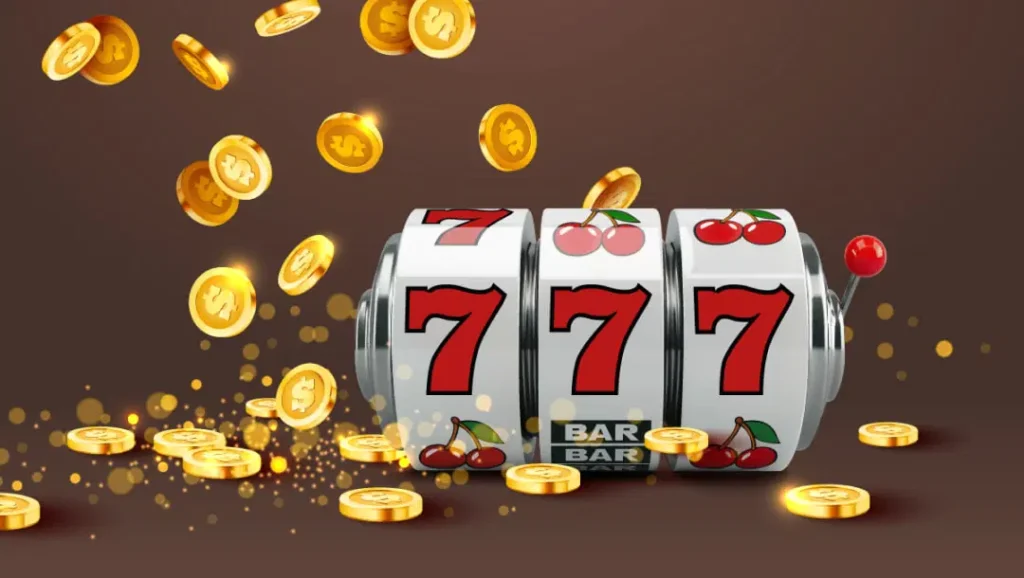Walk into any gaming floor in Nairobi or browse betikalogin.com’s classic section, and you’ll spot them immediately: three reels, straightforward symbols, and a paytable that hasn’t changed since the game launched. These are fixed-payout slots, the direct descendants of mechanical fruit machines that powered gaming halls decades ago. Unlike their progressive cousins that dangle million-shilling jackpots, these games offer predetermined prizes that never fluctuate—what you see is exactly what you get.
For Kenyan players testing the waters or seasoned enthusiasts craving predictable sessions, understanding fixed jackpot slots guide principles matters more than chasing flashy animations. The appeal isn’t complexity; it’s transparency. Every spin operates under identical conditions, every symbol combination pays the same amount whether it’s your first bet or your five-hundredth. This guide strips away the confusion, focusing exclusively on how these machines tick, how to read their language, and how to play fixed payout slots structure your for maximum enjoyment and control.
Why this matters right now: Betting platforms in Kenya increasingly showcase retro slot machines alongside modern video slots, and knowing which category suits your bankroll and temperament separates smart players from those burning through deposits. Fixed payout slots explained properly means you stop guessing and start making informed decisions every session.
How Fixed-Payout Games Work ⚙️
The core difference between fixed and progressive slots lies in the prize pool. Progressive games siphon a percentage of every wager into a climbing jackpot; fixed prize slots online allocate winnings from a static paytable coded into the game’s software. When you land three bars on a single payline slots machine, you collect—say—500 coins. That number never changes, regardless of how many players worldwide are spinning simultaneously or how long it’s been since someone last won.
Fixed lines, paytables & symbol hierarchies 🧾
Traditional slot play revolves around paylines—the specific patterns across the reels where matching symbols trigger payouts. Classic three-reel games typically feature one to five lines: a horizontal center line, top and bottom rows, and two diagonals. You’ll rarely see the 243-ways or cluster-pays mechanics common in modern video slots. This simplicity directly impacts fixed slot mechanics: fewer lines mean easier tracking, and paytable structures remain transparent.
Symbol hierarchy follows a universal pattern inherited from old school fruit machines:
| Symbol Type | Typical Value (for 3-of-a-kind) | Frequency |
| Seven (7) | 100–500× bet | Rare |
| BAR (triple/double/single) | 50–200× bet | Moderate |
| Cherry/Melon/Plum | 10–40× bet | Common |
| Lemon/Orange | 5–20× bet | Very common |
Higher-value symbols appear less often—basic probability ensures the house edge remains consistent. A wild symbol might substitute for any standard icon, but in fixed-payout slots, wilds rarely multiply winnings the way they do in feature-rich video slots. They simply complete combinations.
💡 Practical insight: Betikalogin.com’s classic section displays the paytable before you spin. Screenshot it or jot down the top three payouts. If the highest win is 1,000× your line bet and you’re wagering 10 KES per line, your max single-spin return is 10,000 KES. No surprises, no fine print.
Low-volatility behavior & session feel 🧘
Volatility measures how a game distributes wins over time. High-volatility slots deliver infrequent but substantial payouts; low-volatility games—the hallmark of traditional slot play—offer smaller, steadier returns. Fixed line slot machines almost always fall into the low-to-medium volatility range because their prize structures lack the tiered bonus rounds and multiplier cascades that create explosive swings.
What this means for your session:
- Frequency over size: Expect to win something every 5–10 spins on average. Payouts might only return 0.5–2× your total bet, but they keep your balance from plummeting.
- Predictable rhythm: Your bankroll declines gradually rather than vanishing in five dead spins or doubling in one lucky hit.
- Longer playtime: A 1,000 KES deposit on fixed slots at 20 KES per spin might last 60–80 spins with typical hit rates, compared to 30–40 spins on a high-volatility progressive.
Session feel is subjective but critical. Players who enjoy extended entertainment without emotional rollercoasters gravitate toward fixed slots low volatility profiles. If you’re the type who checks your phone between spins and prefers background gaming during a football match, these machines align perfectly with that tempo.
Mentor’s advice: “Volatility isn’t about winning or losing—it’s about matching the game’s personality to yours. If anxiety spikes when ten spins pass without a hit, stick to fixed-payout classics. Your heart and bankroll will thank you.”
Reading the Paytable 📖
Every slot machine—fixed or progressive—contains a paytable accessible via an “Info” or “?” button. For slot payout tables explained, think of this as the game’s contract with you. It lists every possible winning combination, the coins or credits awarded, and any special rules governing wilds, scatters, or bonus triggers. Ignoring the paytable is like signing a lease without reading the rent amount.
Top combos, wild usage & bonus presence 🧩
Top combinations define the game’s ceiling. In a three-reel fixed-payout slot, the premium win typically involves three matching high-value symbols on the center payline. Common examples:
- Three Red Sevens: 500× line bet (if you’re betting 10 KES per line, that’s 5,000 KES)
- Three Triple BARs: 200× line bet
- Three Double BARs: 100× line bet
Mid-tier wins cluster around fruit symbols:
- Three Cherries: 40× line bet
- Three Melons: 30× line bet
- Two Cherries (any position): 5× line bet
Notice the payout structure slots philosophy: higher-tier symbols pay exponentially more but land less frequently, while lower-tier icons hit often but return modest amounts. This balance maintains the house edge—usually 2–8% for fixed classics—while sustaining player engagement.
Wild symbols in retro slot machines serve a single function: substitution. If you land two Sevens and a Wild on a payline, the game counts it as three Sevens. However, unlike modern video slots, wilds in fixed games rarely multiply wins (2× or 3× multipliers are uncommon). They simply increase your chances of completing a combination.
Bonus presence is minimal. Most fixed prize slots online omit free-spin rounds, pick-and-click features, or cascading reels. The occasional game might include a gamble feature—double-or-nothing on a card color—but these are optional side bets, not integral mechanics. This absence of bonus complexity is precisely why beginners find winning on fixed slots easier to grasp.
✅ Must-do checklist before your first spin:
- Open the paytable and identify the highest-paying symbol combination.
- Confirm whether wilds exist and which symbols they replace.
- Check if any symbols pay for two-of-a-kind or require three matches.
- Note the minimum and maximum bet limits per spin.
❌ Common mistakes:
- Assuming all three-reel slots are identical. Paytables vary significantly even among classics.
- Ignoring coin denominations—betting 1 coin at 100 KES differs from betting 5 coins at 20 KES, even if both equal 100 KES total.
- Skipping the RTP (return-to-player) percentage, usually listed in the game info. Lower RTPs (below 94%) erode bankrolls faster.

Coin value vs denomination choices 💰
This distinction confuses many players on betikalogin.com, so let’s clarify. Coin value is the currency amount (KES) assigned to one coin. Coins per line determines how many coins you wager on each active payline. Total bet equals coin value × coins per line × number of active lines.
Example:
- Coin value: 10 KES
- Coins per line: 3
- Active paylines: 1
- Total bet per spin: 10 × 3 × 1 = 30 KES
If you win 40 coins on a Cherry combination, you collect 40 × 10 = 400 KES, not 40 KES.
Why this matters:
- Paytable displays often show wins in coins, not currency. A “500-coin jackpot” means 500 × your coin value. Set coin value to 1 KES, and you win 500 KES. Set it to 50 KES, and you win 25,000 KES.
- Denomination choices let you scale bets without changing the coins-per-line setting. If the game feels too volatile, reduce coin value instead of deactivating paylines—active lines determine which symbol patterns qualify for payouts.
💡 Player tip: On fixed-payout slots, always activate all available paylines (usually 1–5). The cost difference is negligible, but deactivating a line means missing wins that land on it. Better to lower coin value and keep all lines active than bet high on fewer lines.
Table: Coin value impact on a 100-coin win
| Coin Value | Total Payout |
| 5 KES | 500 KES |
| 10 KES | 1,000 KES |
| 20 KES | 2,000 KES |
| 50 KES | 5,000 KES |
| 100 KES | 10,000 KES |
Same coin win, dramatically different cash result. Adjust denomination to match your bankroll, not the other way around.
Session Planning 🗓️
Random outcomes don’t mean random strategy. Fixed-payout slots reward disciplined session planning more than impulsive play. Because volatility is lower and prize structures are static, you can build a sustainable approach that maximizes playtime and minimizes the sting of variance.
Bet sizing for long, steady sessions ⏱️
The 100-spin rule is your foundation. Divide your session bankroll by 100 to determine maximum bet per spin. If you’ve set aside 2,000 KES for an evening, bet no more than 20 KES per spin. This ensures roughly 100 spins assuming average hit frequency, giving the game’s RTP enough volume to approach its theoretical payout rate.
Step-by-step session plan:
Pre-session (5 minutes):
- Decide your total budget—money you can lose without stress.
- Choose a fixed-payout slot on betikalogin.com with RTP above 95%.
- Open the paytable; note the top three payouts and wild rules.
- Calculate your per-spin bet: bankroll ÷ 100.
- Set coin value to align with that bet, ensuring all paylines are active.
During session (30–60 minutes):
- Track your balance every 25 spins. If you’re down more than 40%, consider switching games (covered next section).
- Celebrate small wins—they’re the game’s design. Don’t chase losses by increasing bets mid-session.
- If you hit a top-tier combo (200× or higher), pocket half the win immediately. Transfer it out of your playing balance.
- Take a 5-minute break every 100 spins. Fatigue breeds poor decisions.
Post-session (5 minutes):
- Log your ending balance.
- Note which symbol combinations hit most frequently—this informs future game selection.
- Withdraw any profit above your starting bankroll. The goal is entertainment, not compounding.
30-day structured play table:
| Week | Daily Budget | Bet per Spin | Target Spins | Focus |
| 1 | 500 KES | 5 KES | 100 | Learning paytables, testing 3 different games |
| 2 | 500 KES | 5 KES | 100 | Tracking hit frequency, identifying favorite |
| 3 | 750 KES | 7.5 KES | 100 | Scaling bet size, maintaining discipline |
| 4 | 1,000 KES | 10 KES | 100 | Full routine, evaluating RTP variance |
By week four, you’ll know exactly which games suit your style, how volatile your experience truly is, and whether fixed-payout slots align with your entertainment goals.
💡 Lifehack: Set a phone timer for 25-spin intervals. When it buzzes, check your balance against expected loss (typically 2–5% of starting bankroll per 25 spins on 96% RTP slots). If losses exceed 10%, the game might be running cold—switch.

When to switch games or denominations 🔄
Switching isn’t admitting defeat; it’s strategic adaptation. Slot symbols combinations in fixed games follow provably fair RNG (random number generation), so no machine is “due” to pay. However, your psychological state and bankroll health determine when a change benefits you.
Switch games if:
- You’ve completed 150 spins below expected RTP. If a 96% RTP slot has taken 96.5% of your bankroll in 150 spins, variance is running harsh. Find a different game with similar RTP but different symbol weights.
- Boredom sets in. Low volatility means repetitive outcomes. If you’re checking your watch, you’re not enjoying the session—time to explore.
- You hit the top payout. Some players prefer to “lock the win” by switching games, believing (incorrectly but harmlessly) that the machine entered a cold cycle. Psychologically, it prevents giving winnings back.
Switch denominations if:
- Your bankroll shrinks to 60% of starting value. Drop coin value by 50% to stretch remaining spins. Example: 10 KES → 5 KES per coin. Your total bet halves, letting you ride out variance.
- You’re winning consistently. If balance grows by 30%, consider raising coin value by 25–50% to capitalize on momentum—but only if you’re prepared to drop back down if luck shifts.
- Session goal shifts. Started with 2,000 KES aiming for 90 minutes? If you’re 30 minutes in and up 500 KES, you can increase bet size slightly without risking the original stake.
❌ Mistakes to avoid:
- Chasing losses by doubling bets. Fixed-payout slots don’t compensate for past results. You’ll just lose faster.
- Switching games every 20 spins. Give each slot at least 100 spins to demonstrate its behavior.
- Raising denominations after losses, hoping to “win it back” on bigger bets. Variance doesn’t care about your urgency.
🎰 Mini-case:
A Mombasa player on betikalogin.com started with 3,000 KES at 30 KES per spin on a classic three-reel slot. After 80 spins, balance dropped to 1,800 KES (60% remaining). He reduced coin value to 15 KES per spin, extending playtime. By spin 180, he hit three Triple BARs for a 3,000 KES win, ending the session at 4,200 KES. Switching denomination—not games—preserved his session and captured the variance upswing.
FAQ ❓
Are fixed-payout slots better for beginners? 🌱
Absolutely, for two reasons: transparency and simplicity. Beginners benefit from payout ratios explained in straightforward paytables without multi-stage bonus rounds or cryptic scatter requirements. You spin, symbols land, paytable matches result—no hidden mechanics or skill-based decisions that complicate outcomes.
Do they pay smaller but more often? 💵
Yes, that’s the low-volatility signature. Fixed slots typically return 40–60% of wagers across frequent small wins (0.5–3× bet) rather than rare large payouts. This doesn’t mean higher long-term RTP—that’s fixed regardless—but player tips fixed slots emphasize steady cashflow over session-saving jackpots.
Can fixed classics offer big max wins? 🚫
Rarely. Maximum wins cap around 1,000–2,000× total bet, modest compared to progressive or high-volatility video slots offering 10,000× or more. The trade-off is lower risk of total bankroll loss in short sessions. If you’re chasing life-changing sums, fixed-payout games aren’t the vehicle—but they excel at sustainable entertainment.
Is RTP different from modern video slots? 📊
Not inherently. Fixed-payout slots and video slots both range from 92–98% RTP depending on the title and provider. However, classic fixed slots tips games often cluster around 94–96%, while cutting-edge video slots sometimes push 97–98%. Check the specific game’s info screen on betikalogin.com rather than assuming category-wide differences.
🎯 Final Takeaway: Fixed-payout slots deliver transparent, predictable gaming sessions perfect for bankroll management and extended playtime. Master the 100-spin rule (bankroll ÷ 100 = max bet per spin), always activate all paylines while adjusting coin value to match your budget, and read paytables before every first spin. These low-volatility classics pay smaller but more frequently, making them ideal for beginners and players seeking steady entertainment over jackpot chasing. Track your balance every 25 spins, switch games after 150 spins if variance runs harsh, and reduce denominations when your bankroll drops to 60%. Remember: fixed-payout slots won’t make you rich, but they’ll keep you in the game longer with realistic expectations and transparent mechanics. Play smart, bet within your means, and enjoy the classic simplicity. Good luck! 🎰
